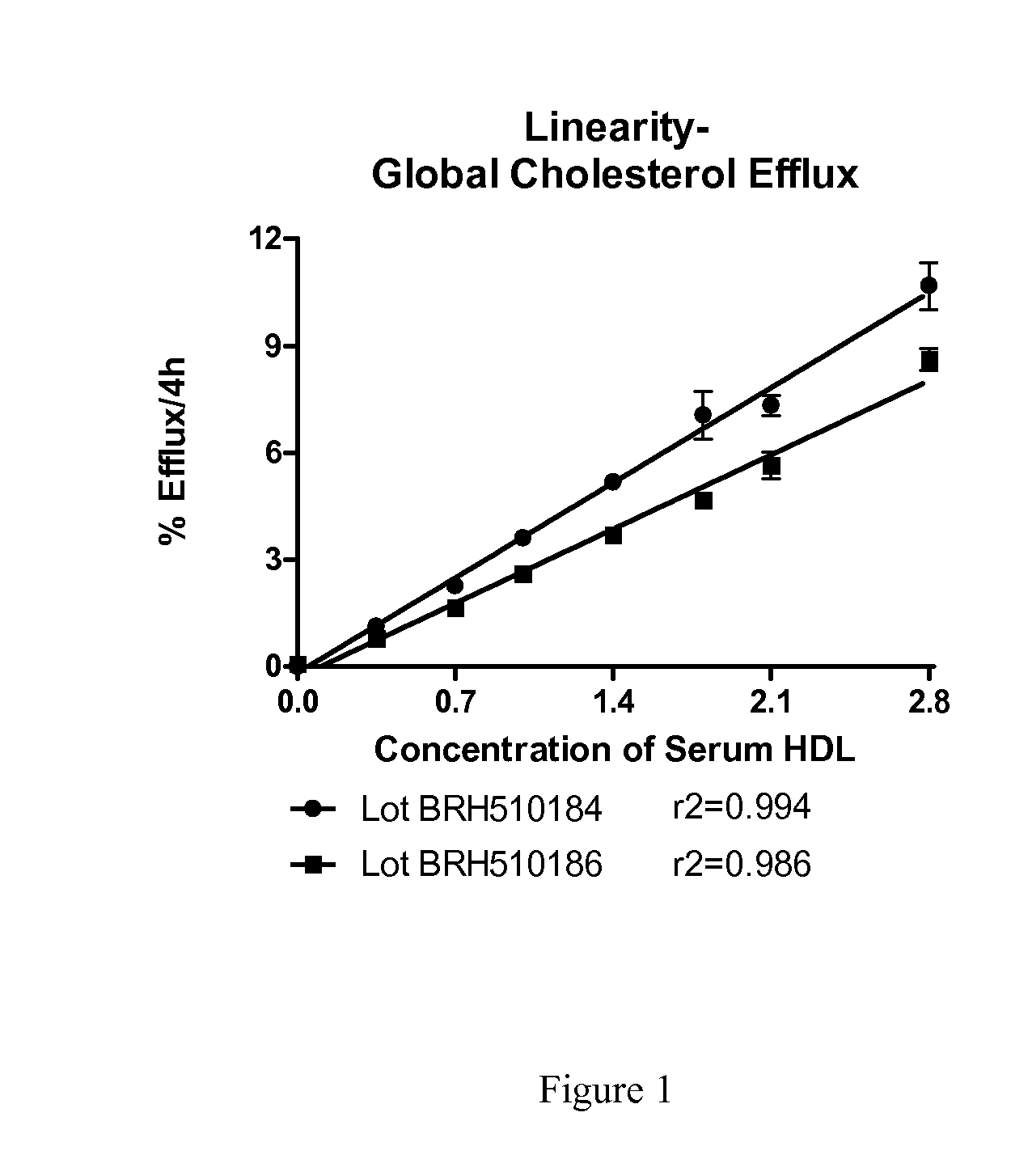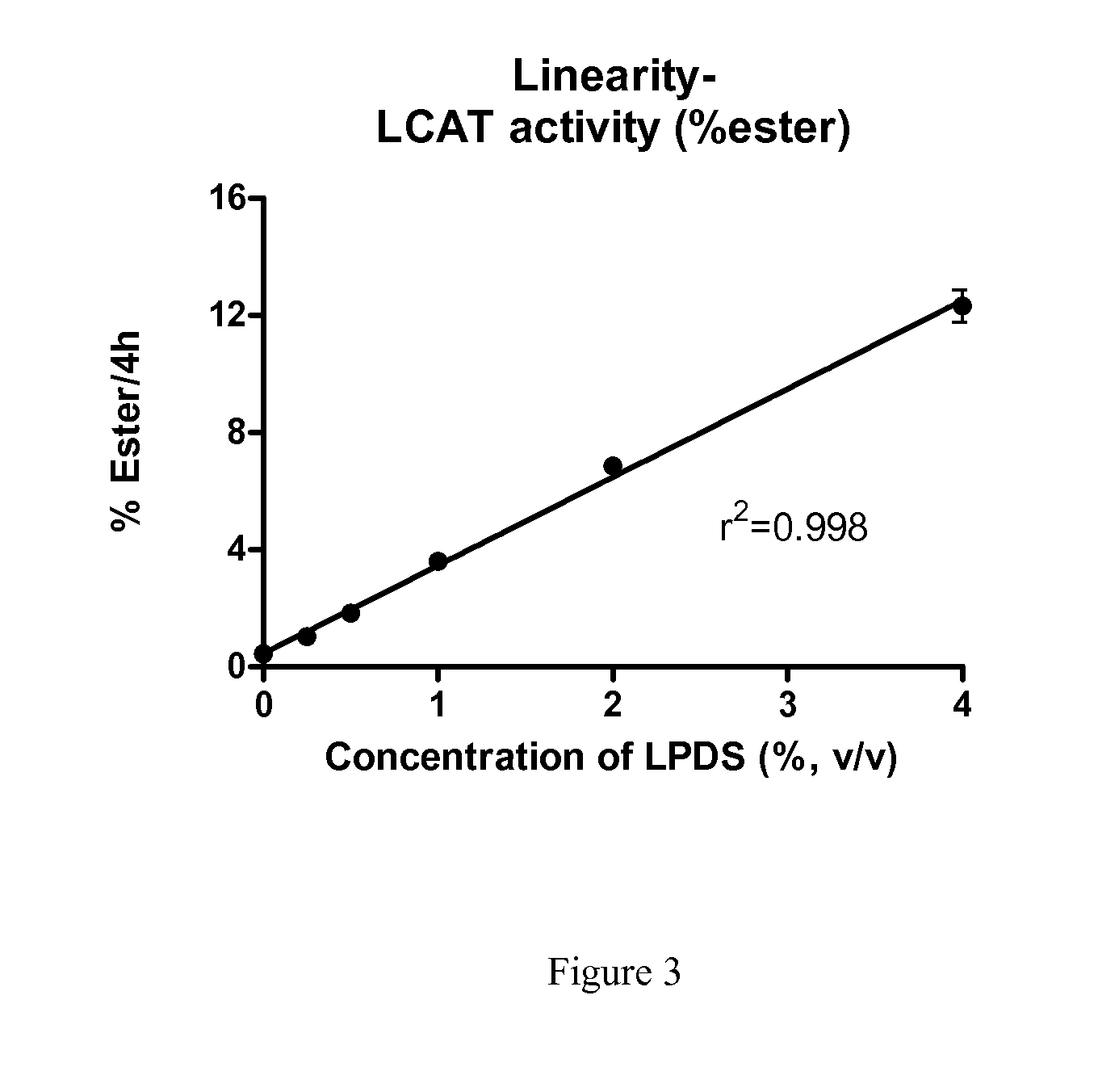Method to Measure Endogenous Enzymatic Serum/Plasma Cholesterol Esterification by LCAT (Lecithin:Cholesterol Acyltransferase) Assay
a technology of cholester and lcat, which is applied in the field of method to measure endogenous enzymatic serum/plasma cholesterol esterification by lcat, can solve the problems of lack of utility for assessment of overall lcat activity and physiological utility, and the use of lcat is not widespread, so as to improve the biologic relevance and accurately determine the amount of cholester
- Summary
- Abstract
- Description
- Claims
- Application Information
AI Technical Summary
Benefits of technology
Problems solved by technology
Method used
Image
Examples
example 1
[0049]Serum HDL was prepared from individual serum samples by precipitation of apoB-containing lipoproteins using polyethylene glycol (PEG). Briefly, for each serum sample, 100 parts serum was mixed with 40 parts PEG (20%, v / v, in glycine buffer, pH 7.4). The mixture was incubated at room temperature for 20 minutes and then centrifuged at 10,000 rpm for 30 minutes at 4° C. The supernatant containing serum HDL was removed and stored at 4° C. overnight until used to prepare test samples.
[0050]Global cholesterol efflux to test samples was conducted. Briefly, J774 mouse macrophage cells per well were seeded on 24-well plates in growth medium. The next day, growth medium was replaced with labeling medium containing [3H]-cholesterol and ACAT inhibitor and incubated overnight. After the labeling period, cells were incubated with medium containing 0.2% (w / v) BSA and ACAT inhibitor for 16-18 Hrs. without (control) and with cAMP (upregulated). [3H]-cholesterol released to test samples after i...
example 2
[0064]Human subjects were infused with 9 mg / kg ACP-501 (recombinant human LCAT (rhLCAT)) for 0, 1, 6, 12, 24, 48 and 72 hours. Serum samples were collected at each time point and LCAT mass and LCAT were determined. LCAT mass was determined by ELISA protein assay by AlphaCore Pharma. LCAT activity was determined as described in Example 1. FIG. 3 shows that ex vivo LCAT activity correlates with LCAT mass in serums of subjects treated with rhLCAT.
PUM
| Property | Measurement | Unit |
|---|---|---|
| pH | aaaaa | aaaaa |
| temperature | aaaaa | aaaaa |
| concentrations | aaaaa | aaaaa |
Abstract
Description
Claims
Application Information
 Login to View More
Login to View More - R&D
- Intellectual Property
- Life Sciences
- Materials
- Tech Scout
- Unparalleled Data Quality
- Higher Quality Content
- 60% Fewer Hallucinations
Browse by: Latest US Patents, China's latest patents, Technical Efficacy Thesaurus, Application Domain, Technology Topic, Popular Technical Reports.
© 2025 PatSnap. All rights reserved.Legal|Privacy policy|Modern Slavery Act Transparency Statement|Sitemap|About US| Contact US: help@patsnap.com



